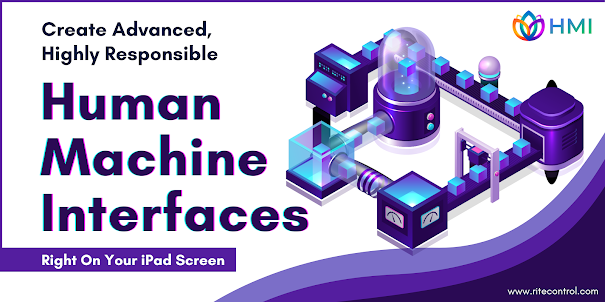An Overview of PLC HMI Programming & Importance in Human-Machine Interaction
In today's industrial landscape, automation reigns supreme. While Programmable Logic Controllers (PLCs) form the backbone of this automation, a crucial link exists between humans and these machines: PLC HMI Programming. This blog delves into this domain, exploring the interplay between PLCs and HMIs and their significance in achieving seamless Human-Machine Interaction (HMI).
Demystifying the Acronyms:
- PLC (Programmable Logic Controller): The brain of an automated system, the PLC receives input signals from sensors and machines, executes pre-programmed logic based on these inputs, and triggers output signals to control actuators, valves, and other devices.
- HMI (Human Machine Interface): The operator's window into the automated world. HMI acts as a user interface, typically a touchscreen or computer monitor, displaying process data, providing control functions, and allowing for interaction with the PLC.
PLC HMI Programming: Bridging the Gap
PLC HMI Programming involves creating the software that governs this crucial communication between humans and machines. This programming establishes:
- Data visualization: The HMI displays real-time data, such as sensor readings, equipment status, and production metrics, in an easily understandable format through graphs, charts, and gauges.
- Control functionalities: Operators can initiate commands like starting/stopping machines, adjusting parameters, and modifying setpoints directly through the HMI.
- Alarm systems: HMI triggers visual and audible alerts for abnormal conditions, enabling prompt intervention and preventing costly downtime.
- Data logging and historical trends: HMIs can record operational data over time, allowing for analysis, performance optimization, and preventive maintenance strategies.
The Significance of Effective PLC HMI Programming
- Enhanced Operator Efficiency: Intuitive HMIs empower operators to monitor processes effectively, respond to situations swiftly, and make informed decisions, leading to increased productivity.
- Improved Process Control: Precise control over various aspects of the process through the HMI ensures consistent product quality and minimizes production errors.
- Reduced Downtime: Timely identification of potential issues through HMI alarms enables swift corrective actions, preventing equipment failures and production halts.
- Simplified Troubleshooting: The HMI's diagnostic tools and data logging features help pinpoint the root cause of problems, facilitating faster troubleshooting and repairs.
Rite Control LLC: Your Partner in Effective PLC HMI Programming
At Rite Control LLC, we understand the critical role of PLC HMI Programming in industrial automation. Our team of skilled engineers possesses extensive experience in:
- PLC programming: Utilizing industry-standard languages like Ladder Logic, Function Block Diagram, and Structured Text to develop robust control programs for PLCs.
- HMI development: Designing user-friendly HMI interfaces that prioritize clarity, ease of use, and efficient information presentation.
- SCADA integration: Integrating HMI with Supervisory Control and Data Acquisition (SCADA) systems for comprehensive process monitoring and control.
We work closely with our clients to understand their specific needs and develop customized PLC HMI solutions that optimize their operations.
The Rise of App-Based HMI: A Glimpse into the Future
The industrial landscape is witnessing a paradigm shift with the emergence of app-based HMI solutions. These mobile applications leverage the processing power and connectivity of smartphones and tablets to provide HMI functionalities remotely. This opens doors for:
- Real-time monitoring: Operators can monitor critical process parameters and equipment status from anywhere, enhancing flexibility and responsiveness.
- Remote control: Certain control functions can be made accessible through the app, enabling adjustments and interventions even when the user is physically away from the production floor.
- Improved collaboration: Sharing process data and insights through the app fosters better communication and collaboration between teams.
While traditional HMI interfaces remain essential for primary control, app-based solutions offer a compelling future direction for enhanced mobility and remote access within industrial automation.
Conclusion
PLC HMI Programming plays a pivotal role in ensuring effective Human-Machine Interaction within industrial automation. By enabling intuitive control, real-time monitoring, and efficient data visualization, well-programmed HMI interfaces empower operators, optimize processes, and contribute significantly to the success of modern industrial operations.
Rite Control LLC offers comprehensive PLC HMI Programming services to help businesses harness the true potential of automation. We are committed to providing cutting-edge solutions that cater to the industry's evolving needs, including the integration of app-based HMI functionalities.

.png)

Comments
Post a Comment